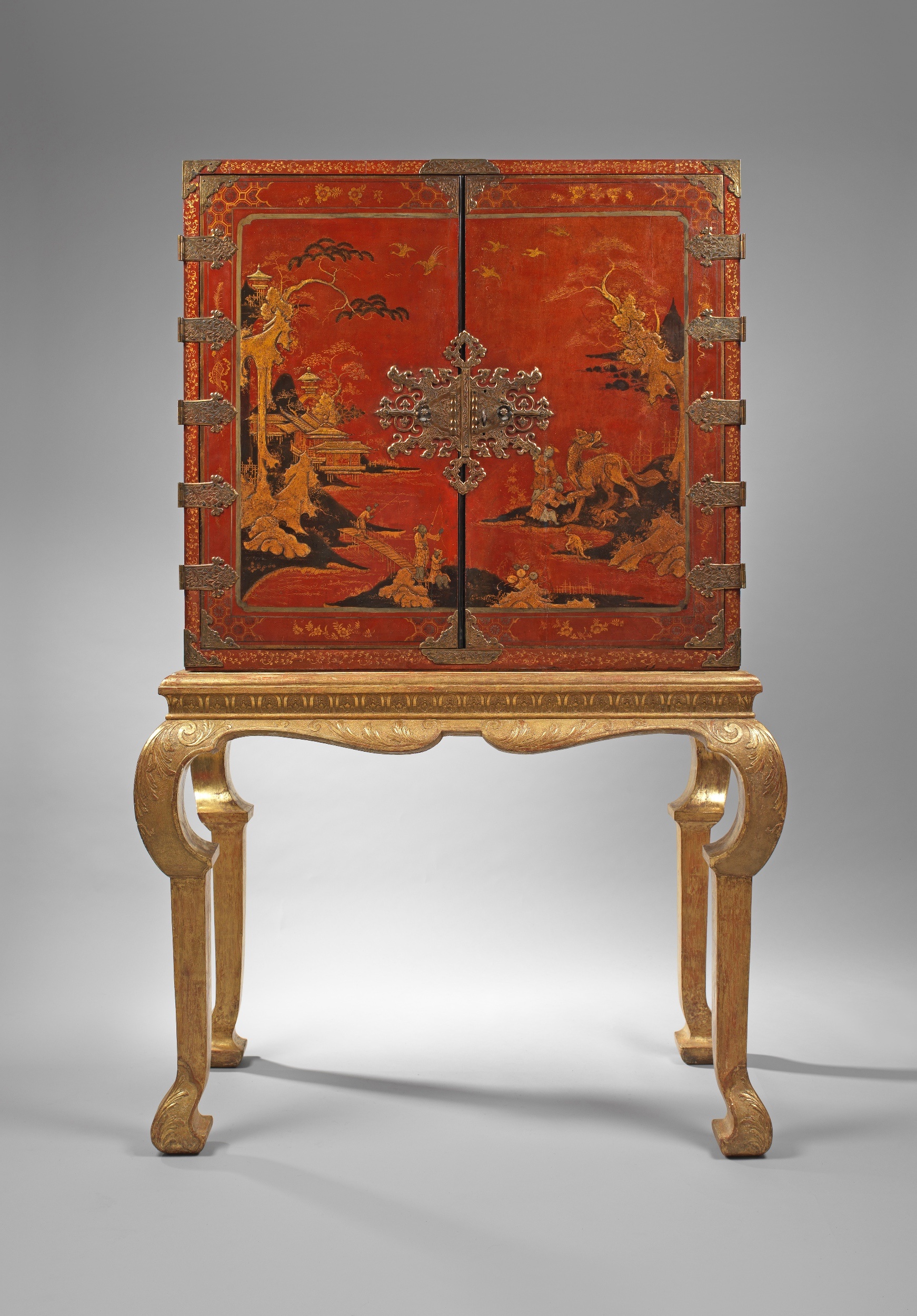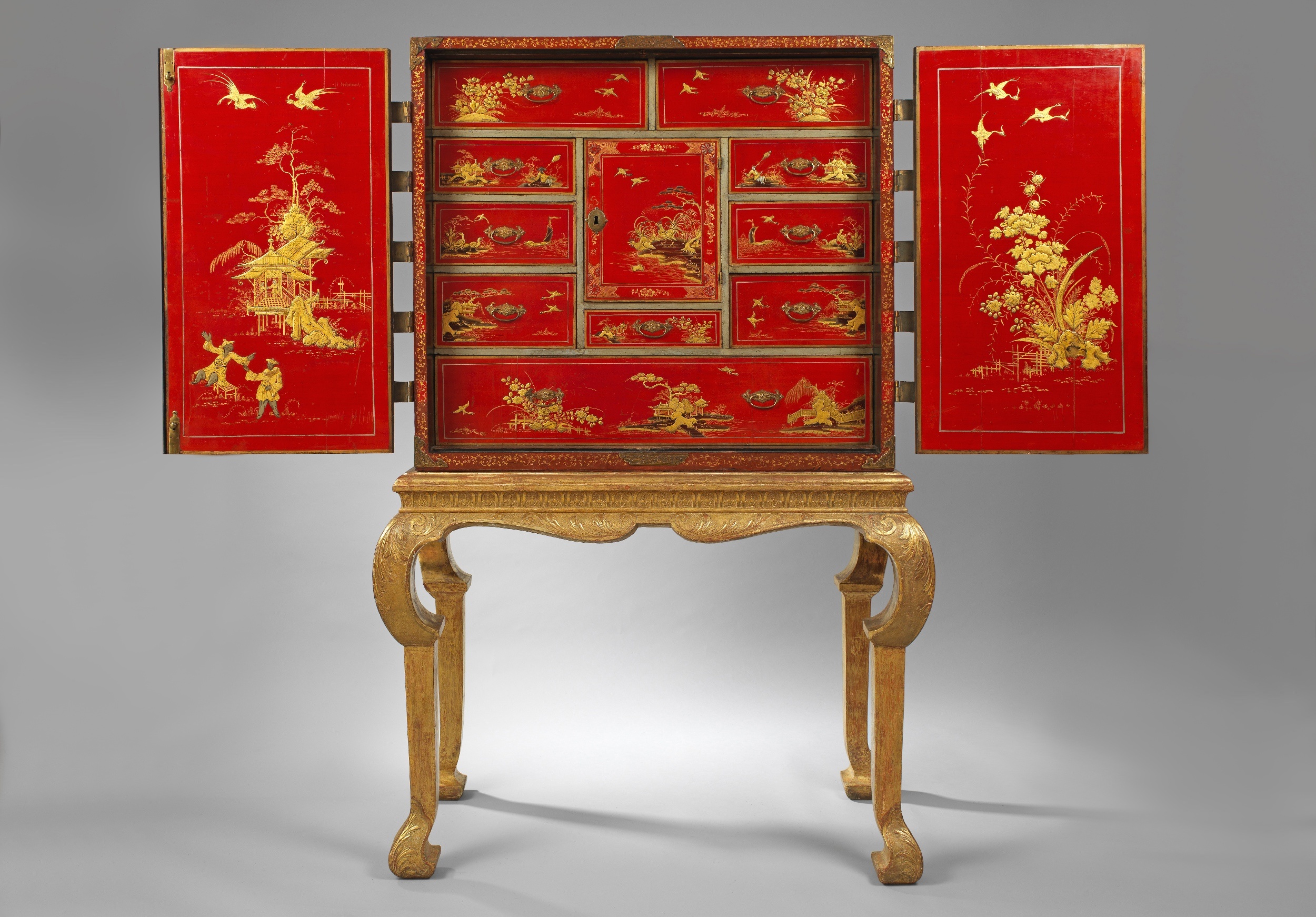

1720


The carved giltwood stand with moulded frame, above a concave frieze with arched panels each framing an inverted harebell with a stylised leaf to each corner, the shaped apron centred by scrolling acanthus leaves, raised on hipped legs with stylised carved acanthus decoration to the knee. The feet with conforming foliate decoration.
The chest decorated with gold leaf on a vermilion background depicting Chinoiserie landscapes and buildings with figures and exotic birds, the two doors having elaborately decorated brass hinges, opening to reveal a fitted interior of ten similarly richly decorated drawers around a central cupboard revealing a further interior of drawers.
The attribution to James Moore is based upon the very similar design of two pairs of giltwood and oak tables with marble tops that were made for Blenheim Palace, Oxfordshire. Both pairs of tables were supplied by James Moore to John Churchill, the 1st Duke of Marlborough (1650-1722), in about 1719 and are illustrated in Adam Bowett’s Early Georgian Furniture p. 204. The unusual form to the legs is also seen in a set of giltwood chairs at Blenheim, on which the angular form is decorated with foliate decoration and a shaped cut to the underside. Another very similar pair of tables, but with lacquer tops and attributed to Moore were made for the Duke of Newcastle and a giltwood candlestand made for the the Treasurer’s House, York , are illustrated in Adam Bowett’s Early Georgian Furniture, p. 205.
Moore is first recorded at Blenheim in1705, the year that construction of the great palace began, and he clearly established an unusually positive relationship with the notoriously difficult Duchess of Marlborough. Moore was in residence at the house from 1717 to 1724, acting as much more than a furniture maker. Instead, he operated as a trusted surveyor, supervising the completion of the building works and helping to produce an interpretation of the designs for the building by the great English Baroque architect Sir John Vanbrugh (1664-1726) that more closely accorded with the Duchess’s desires. So emollient an effect did Moore have on his famously fractious employer that in a letter of 1719 to her friend Mrs Boscawen, the Duchess described Moore as a “miracle of a man”.
Moore’s involvement in supplying furniture for the great project at Blenheim is an indication of his considerable standing in court circles. At around the same time, he was also supplying furniture to the royal family, both to King George II and Queen Caroline, which included the giltwood suites for Hampton Court supplied in September 1715.
| Dimensions | CM | Inches |
|---|---|---|
| Width: | 114 | 45 |
| Depth: | 63 | 25 |
| Height: | 178 | 70 |